This Long-Lasting Roofing Material Works With Many Styles
http://decor-ideas.org 07/27/2015 02:13 Decor Ideas
Concrete tile roofs are masters of disguise. From an architectural standpoint, they can play many parts. Molded styles are made to mimic natural clay, slate and shake roofs. Concrete roof tiles are as well, which helps make this material one of the most universally popular roof selections around the world.
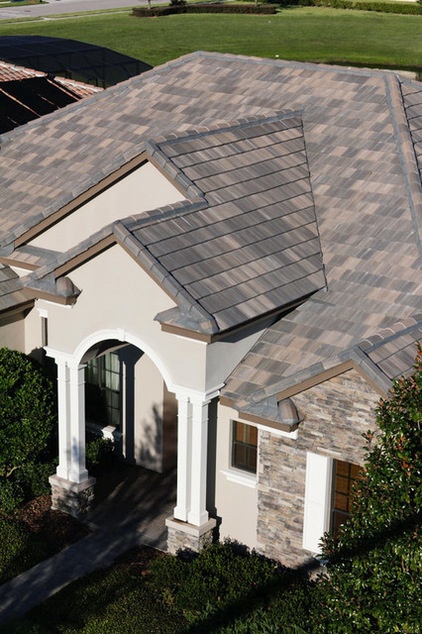
The Material
Concrete roof tiles consist of cement, sand, water and pigment. They are mass-produced at regional facilities, where materials are mixed and extruded before being coated, cured and prepared for shipment.
Concrete roof tiles are widely used. They have a long life span and are available in various colors and molded shapes — and cost less than clay, shake or slate.
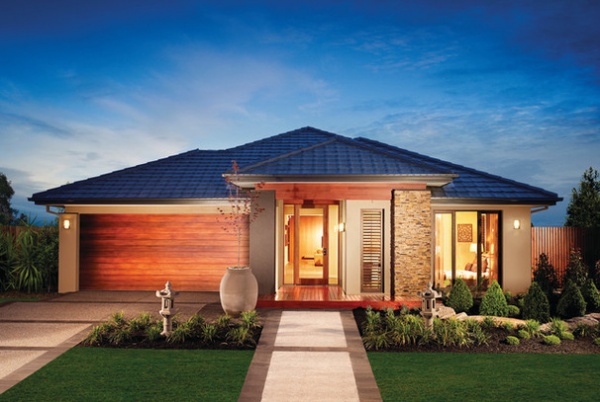
Cost
Concrete tile roofs are more expensive, difficult and time-consuming to install than asphalt, or composition, shingle roofs. But they are less expensive than clay or slate roofs. In many cases, concrete tiles can create a similar look for significantly less cost.
Concrete roof tiles can typically be installed by a professional at about $7 to $10 per square foot. A 2,000-square-foot single-story home with a pitched roof that’s 2,400 square feet (simply called 24 square in roofer’s parlance) would cost $16,000 to $24,000, whereas an authentic clay tile roof would probably cost twice that amount.
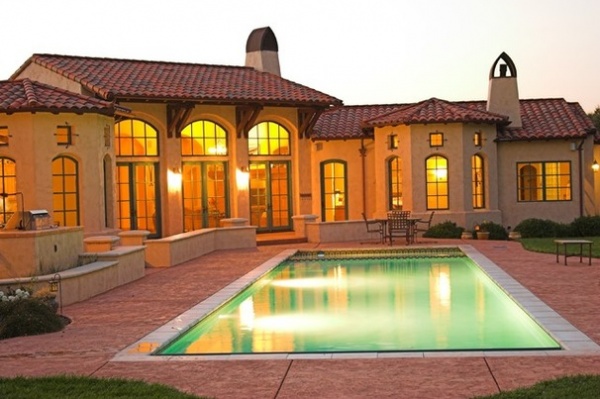
Options
Mimicry. A big advantage of concrete tiles is the range of options available. The material can be molded into shapes to mimic barreled clay roofs, flat slate roofs, split shake roofs and everything in between. It is also available in an assortment of integral-dyed colors, sometimes with antiqued coatings, and in blends creating a specific look to perfectly complement the architectural palate of your home.
Lightweight. Other options include lightweight concrete tile, which is less durable than basic concrete tile. (I can tell you from experience that lightweight tile has a propensity to crack when walked on.) When a home has not been structurally designed to withstand the weight of a typical concrete tile roof, lightweight concrete tile can be an alternative to asphalt or wood shingles.
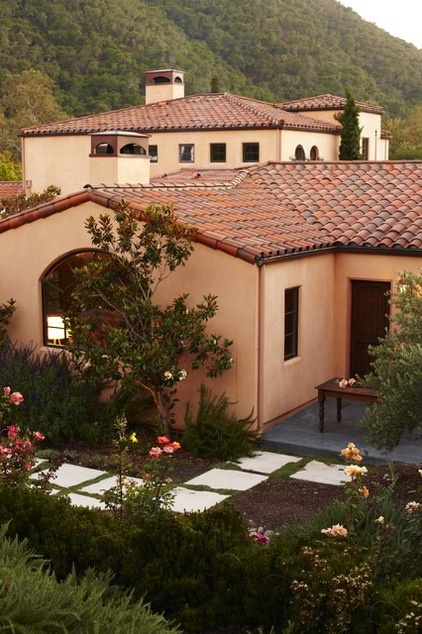
Rounded, semicylindrical tiles. These variations were historically hand-formed in clay. The styles include Mission “S”-shaped tiles, barrel tiles and Roman tiles, and can fit a variety of home styles, such as Mediterranean, Spanish and Tuscan.
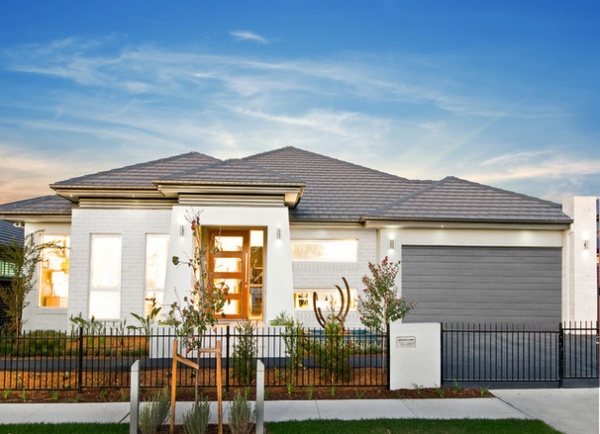
Flat tiles. Flat tiles often mimic authentic slate tile or wood shingles and shakes. Concrete roof tile manufacturers offer tile shapes and colors designed to replicate various wood shingle types as well as specific styles fitting for English- and French-style homes. Molded bevels, scallops and finish textures allow flat tiles to replicate specific historical shapes.
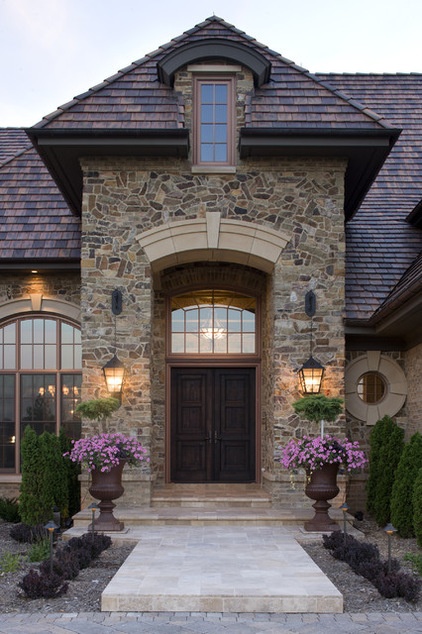
At first glance, the roof material on this French chateau-style home looks to be authentic slate, but it is a concrete tile replica. The master of disguise strikes again.
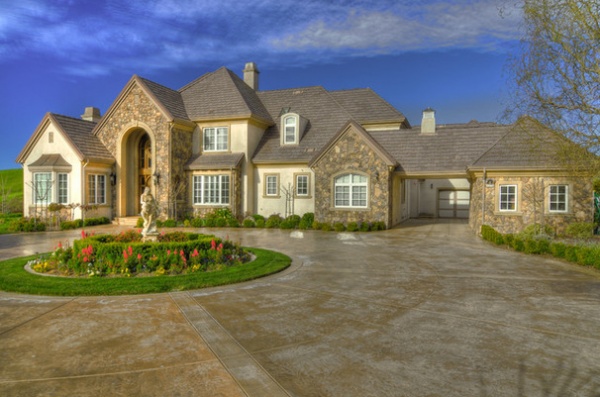
Pros of Concrete Tile
Long lifeNumerous style and color optionsFireproofRot-resistantCheaper than slate or clay while offering a similar lookLightweight tiles available
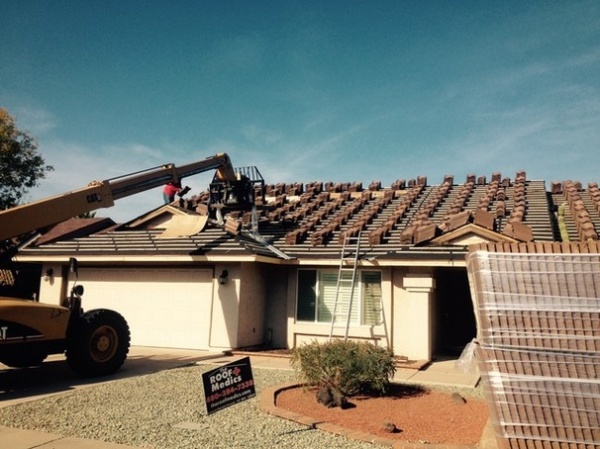
Cons of Concrete Tile
Concrete tile roofs can last 50 or more years, but their underlayment will not. The underlying waterproof material will need to be replaced before your concrete tile will.More expensive than most asphalt shingle roof options.Most concrete roof tiles are heavy, and homes need to be structurally engineered to support the weight. It’s fragile. Even the regular concrete roof tiles have a tendency to break when walked on. The lightweight, more expensive varieties? Don’t even breathe on them.Concrete color is not steadfast. It will fade with age, and does not have the true authentic feel and richness of hue that clay and slate roofs do.
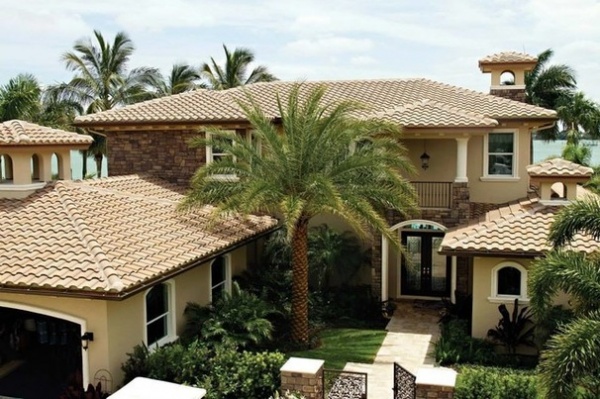
Versatile
For uniform versatility, concrete roofs are hard to beat. They can offer a substantial savings when compared with clay and slate, and have a longer life and greater fire resistance than wood roof materials.
Though the look may not be identical, it truly can be difficult from afar even for an expert to discern the difference between an authentic, old-world roof material and concrete roof tile.
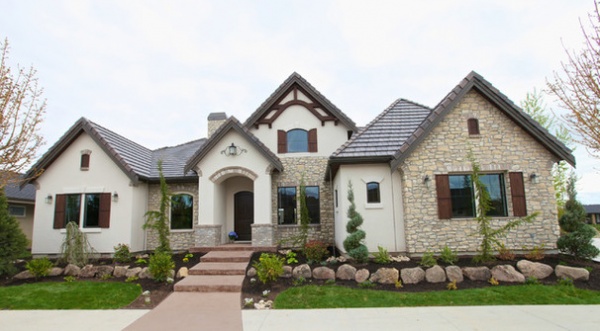
Up Next
Next we’ll take look at wood shingles and shakes. For some, the natural look of cedar on a roof, slowly turning to a weathered gray, simply cannot be matched.
See more roof material options: Slate | Metal | Asphalt
Related Articles Recommended












